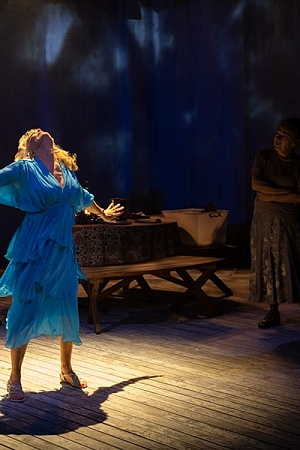A Raisin in the Sun
 - 920.jpg)
In the annals of theatre history, Lorraine Hansberry’s A Raisin in the Sun (which had its première in 1959, when she was only twenty-eight) will go down as the first Broadway play written by an African-American woman and directed by an African-American man. It would have been beaten a couple of seasons earlier by Alice Childress’s Trouble in Mind if the redoubtable Childress had not refused to allow her would-be producers water down her work, which portrayed the demeaning and frustrating position of Black actors forced into endless ‘yes’m, no sir’ shuck and jive roles. As one of Childress’s aggrieved characters complains: ‘All I did was shout “Lord have mercy” for almost two hours.’ It was Hansberry, taking her lead from Sean O’Casey’s portraits of Irish life, who freed Black actors from Broadway stereotypes. In his review of that first performance, Kenneth Tynan was partly right when he described the play as having ‘proud, joyous proximity to its source, which is life as the dramatist has lived it’ . Proximity to life, yes, but not precisely as Hansberry had lived it.
Continue reading for only $10 per month. Subscribe and gain full access to Australian Book Review. Already a subscriber? Sign in. If you need assistance, feel free to contact us.















Comment (1)
Leave a comment
If you are an ABR subscriber, you will need to sign in to post a comment.
If you have forgotten your sign in details, or if you receive an error message when trying to submit your comment, please email your comment (and the name of the article to which it relates) to ABR Comments. We will review your comment and, subject to approval, we will post it under your name.
Please note that all comments must be approved by ABR and comply with our Terms & Conditions.